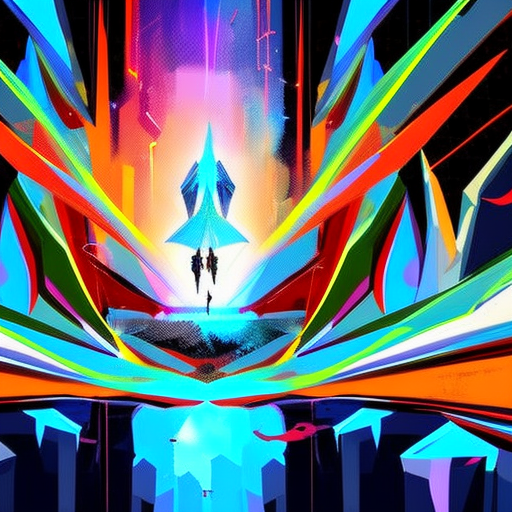The Shock of the New: Exploring the Evolution of Modern Art
In “The Shock of the New,” art critic Robert Hughes takes readers on a captivating journey through the history of modern art, examining its development, key movements, and the artists who revolutionized the art world. From the birth of Impressionism to the rise of abstract expressionism, Hughes provides a comprehensive exploration of the major shifts and innovations that shaped the art of the 20th century.
The Birth of Modernity: From Impressionism to Cubism
Hughes begins his exploration by delving into the birth of modern art with the Impressionist movement. He highlights the groundbreaking work of artists like Claude Monet and Edgar Degas, who challenged the traditional notions of representation and sought to capture the fleeting effects of light and movement. Through their bold brushstrokes and vibrant color palettes, the Impressionists paved the way for the radical changes that were to come.
As the book progresses, Hughes delves into the emergence of Post-Impressionism and the revolutionary work of artists such as Paul Cézanne and Vincent van Gogh. He explores their departure from the naturalistic approach of the Impressionists and their exploration of form, color, and emotion. Hughes also examines the birth of Cubism, spearheaded by Pablo Picasso and Georges Braque, which shattered traditional notions of perspective and representation by presenting multiple viewpoints simultaneously.
The Avant-Garde and the Rise of Abstraction
Hughes then takes readers on a journey through the avant-garde movements of the early 20th century, including Dadaism and Surrealism. He explores the radical experimentation and rejection of traditional artistic conventions that characterized these movements. From Marcel Duchamp’s controversial “Fountain” to Salvador Dalí’s dreamlike landscapes, Hughes highlights the subversive nature of these artists and their desire to challenge societal norms.
The book also delves into the rise of abstraction, with artists like Wassily Kandinsky and Piet Mondrian pushing the boundaries of representation even further. Hughes explores the spiritual and philosophical motivations behind abstract art, as artists sought to convey emotions and ideas through non-representational forms and colors.
The Triumph of American Art: Pop Art and Beyond
In the final section of the book, Hughes focuses on the triumph of American art in the post-war era. He examines the emergence of Pop Art, with artists like Andy Warhol and Roy Lichtenstein incorporating popular culture and consumerism into their work. Hughes explores how these artists blurred the lines between high and low art, challenging the elitism of the art world.
Hughes also discusses the rise of minimalism and conceptual art, highlighting the work of artists such as Donald Judd and Sol LeWitt. These artists sought to strip art down to its essential elements, emphasizing the importance of the idea behind the artwork rather than its physical form.
Throughout “The Shock of the New,” Hughes provides insightful analysis and contextualizes each artistic movement within the broader cultural and historical context. His engaging writing style and deep knowledge of art history make this book a must-read for anyone interested in understanding the evolution of modern art.
- Artists like Monet and Picasso revolutionized the art world with their innovative approaches.
- The avant-garde movements of Dadaism and Surrealism challenged traditional artistic conventions.
- Abstract art sought to convey emotions and ideas through non-representational forms and colors.
- Pop Art blurred the lines between high and low art, incorporating popular culture into artistic expression.
- Minimalism and conceptual art emphasized the importance of the idea behind the artwork.
“The story of modern art is the story of the progressive loss of art’s audience. Art has increasingly become the concern of the artist and the bafflement of the public.” – Robert Hughes
In “The Shock of the New,” Robert Hughes not only provides a comprehensive overview of the major movements and artists that shaped modern art but also delves into the societal and cultural implications of these artistic transformations. Through his engaging narrative, readers gain a deeper understanding of the evolution of art and its impact on the world we live in today.












